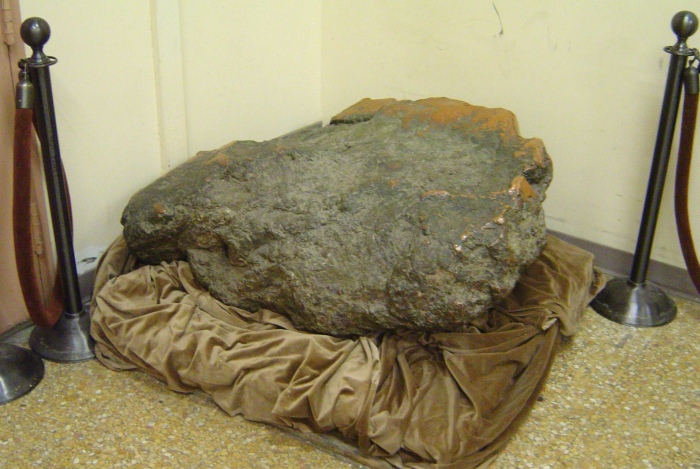Ontonagon Copper Boulder at the Smithsonian by Ian Shackleford
Today’s post is what we call a foreshadowing in the photo blog game. It concerns the extremely messy saga of the Ontonagon Boulder which is now at the Smithsonian Museum of Natural History. You can (and should) read it all, but here’s some highlights:
In 1669 the French government sent Louis Joliet to search for copper deposits in the area. Joliet decided to discover the Mississippi River instead.
English adventurer and fur trader Alexander Henry trips up the Ontonagon River in 1765 and 1771. An underwhelmed (and astoundingly wrong) Henry was unimpressed writing, “The copper ores of Lake Superior can never be profitably sought for but for local consumption….” The 5 million plus tons of copper 5,400,000 disagree.
In 1819 Gen. Lewis Cass directed an expedition to the boulder & sought to move it by burning thirty cords of wood around the boulder & throwing water on the hot copper which didn’t succeed in fracturing the boulder.
In 1841, Detroit hardware merchant Julius Eldred and an interpreter set out to buy the boulder from the Chippewa on whose land it stood for $150. He failed that time & the next, but in 1843 with a portable railway & car managed to move it (after having to buy the rock AGAIN from some Wisconsin miners for $1,365).
From the U.S. National Museum report of 1895: For four miles and a half, over hills 600 feet high, through valleys and deep ravines; through thick forests where the path had to be cut; through tangled underbrush, the home of pestiferous mosquitoes, this railway was laid and the copper bowlder (sic) was transported; and when at last the rock was lowered to the main stream, nature smiled on the labors of the workmen by sending a freshet to carry their heavily laden boat over the lower rapids and down to the lake.
At this long-awaited, triumphant point, Eldred was confronted by an order from the Secretary of War to General Cunningham, directing that the copper boulder be seized for transportation to Washington.
“The persons [Eldred and his sons] claiming the rock have no right to it,” the Secretary decreed, “but justice and equity would require that they be amply compensated for the trouble and expense of its removal from its position on the Ontonagon to the lake; and for this purpose General C. will examine their accounts and allow them the costs, compensating them fully and fairly therefore, the sum, however, not to exceed $700….”
In the end & with the help of Congress, Eldred received $5,664.98 which is roughly $200,000 in today’s dollars.
Read lots more from the Smithsonian & also check out a more detailed look at the drama around Eldred from The Mining Journal.
The photo was taken by Ian Shackleford & appears in the Wikipedia entry for the Boulder.




